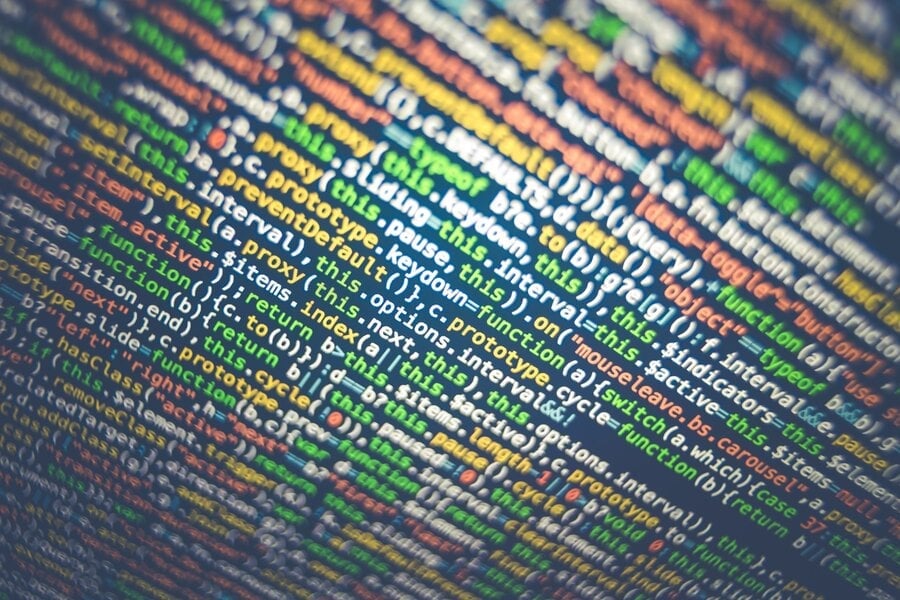The data revolution is here. 81% of American retailers now use automated price scraping for competitive intelligence and dynamic pricing, compared to just 34% four years ago. If you’re planning to join them by doing your own web scraping with proxies protecting you, the next step is parsing all of that data into usable formats. Better yet, you can do web scraping and data parsing with proxies all in one step.
The size and budget of your data-based project, combined with your coding capabilities, are deciding factors in what tools you should use. For now, I’ll go over what data parsing is and give a general explanation of the many tools available in a way that less-technology-inclined individuals can appreciate.
A future article will go more in-depth on the means of building your own parser and utilizing prebuilt ones if you’re looking for some hands-on information. In it, I’ll cover both coding-required and point-and-click with no-coding-required options.
What is Data Parsing?
Table of Contents
ToggleTo simplify, data parsing is taking that large mess of information you started with, most likely from web scraping, and converting it into something more useful. Once organized, it can pull out all of the relevant parts and add them to your database properly.
Most commonly, this is sifting through the HTML of the websites you scraped and then organizing the relevant results. Of course, to successfully pull that information in the first place, you need a proxy server for your scraper to go through.
Web scraping involves extracting data from websites and transforming unstructured HTML data into a structured format for further analysis.
Source: Mitchell, R. (2020). Web scraping with Python: Collecting data from the modern web (2nd ed.). O’Reilly Media.
Usually, the data you pull in is unstructured. By parsing data with certain software or libraries, you translate it into a file type that both people and computers can better understand. I’ll go over exact examples of several parsing tools in a future, more tech-focused article. Throwing names around won’t do you much good right now.
Even when the source is structured, any information that isn’t labeled with its own HTML tags is still a challenge for a computer to pick out. It’s even worse if it’s in the middle of a bunch of other text.
On top of your parser organizing the data it goes through, it can also help fill in the blanks that your database might not cope with being left empty, too.
Also read: The Benefits of Using a Proxy Server
Data Parsing Tools Overview
As many types of sources as there are, there are just as many tools for converting it into a usable state for other programs. No single parser can handle every possible file type. Just being able to handle more than one is an accomplishment as it is.
Some of them have their own documentation of how to setup proxies, like the proxy setup documentation for A-Parser.
There are options with varying degrees of difficulty to use. The ease of use is generally inversely proportional to how much control you have over it or its price tag.
Scraper APIs
The easiest to use of all is simply paying someone else to run a cloud-based scraper API for you. They only give you the data you requested in the first place, and it’s already organized. This, of course, can get quite pricey. But throwing money at it can turn neatly parsed information into EZ-mode, like many other things in life.
Scraper Programs/Extensions
The next easiest to use is to have your web scraper use a built-in parser, so you at least don’t have to do everything in two separate steps. It will organize and save just what you’re looking for, instead of the full information on every page it snagged. This equates to less wasted time and less wasted storage space.
Scraping Followed By A Separate Parser
In a sense, using a simple scraper and then a basic parser is the easiest to set up. But it’s also the least efficient. That loss of efficiency can then cost you in the long run. It will also have the fewest customization options.
You’ll need to wait until all the information you’re gathering is fully scraped. This includes a lot of unneeded data burying what you’re after. Then you could finally run an independent data parser to make it usable while trimming the fat.
Scraping unnecessary sites or unnecessary data could consume and waste resources and slow down the data extraction process.
Source: Analytics Vidhya, What is Data Scraping? Is it Legal? Benefits & Challenges
But hey, at least you still collected data and made it useful. If you’re doing something small-scale and not all that fancy, it could very well be all that you need.
However, running a scraper program with an attached parser is typically the recommended course of action. This is also where proxies come into play.
Also read: The Importance of Web Scraping
Data Parsing with Proxies
If you had a scraper running without a proxy, apart from the fact it wouldn’t get very far, it could go sideways if it’s parsing at the same time. If your target website has misdirection-type honeypots set up and your parser extrapolates that false data, your entire dataset may become unusable. That would certainly defeat the purpose of setting all of this up in the first place, wouldn’t it?
If you aren’t familiar with this context, a honeypot is a sort of virtual trap that is easier to access than the rest of the site. They aren’t viewable by normal users since they won’t have any clickable links to them. As a result, only bots can see them. Since only bots find those parts of the site, they know that anything that accesses it must be a bot.
The source website’s anti-bot measures outright block access, which is, of course, also a major issue. A well-designed scraper going through a quality rotating proxy service like KocerRoxy will ensure your bot doesn’t get detected and then either blocked or thrown into that deceptive honeypot.
Also read: Web Scraping With Proxies
What Type of Proxy Should I Use?
Depending on your target data and the scale of your operations, a low-cost datacenter proxy may be sufficient. However, it is highly recommended for you to use a rotating residential proxy. That way, the websites you’re scraping will be convinced that it’s just normal people making all of those requests.
Where you sit on this spectrum determines whether a cheap datacenter proxy is good enough or whether you need the extra safety and realism of rotating residential IPs.
| Scenario / Target Data | Recommended Proxy Type | Typical Cost Level |
|---|---|---|
| Scraping public, low-value data (simple blogs, low-traffic sites) | Low-cost datacenter proxy | Low |
| Price monitoring on smaller ecommerce sites | Datacenter proxy pool with basic rotation | Low–medium |
| Scraping search results (SERPs) or popular comparison sites | Rotating residential proxies | Medium–high |
| Scraping large ecommerce marketplaces (Amazon, Walmart, etc.) | Rotating residential proxies (or mixed residential + ISP) | High |
| Social media data (public profiles, posts, comments) | Rotating residential proxies | Medium–high |
| Login-protected dashboards and user accounts | Sticky or session-based residential proxies | Medium–high |
| Compliance-sensitive or high-risk targets (aggressive bot defenses) | Premium rotating residential or ISP proxies | High–very high |
| Internal tools, testing, or staging environments | Single datacenter proxy or even direct IP | Very low |
Any website with strong anti-bot measures in place can also detect that a data center proxy is being used to make calls. This automatically equates to a bot in their POV. Thus, they go with activating their protections regardless of what type of bot you’re using or your intentions.
An added perk of using a residential proxy instead of a datacenter proxy is that you could potentially take advantage of their IP source’s geo-locations. This would allow you to gather any information you normally wouldn’t have access to due to the country you’re in.
Also read: Unlimited Datacenter Proxies
Conclusion
Think about how a comma in the wrong place can confuse computers. Now, imagine how it would handle the different formats of writing down the day’s date, people’s phone numbers, or street addresses. It’s a pretty easy guess that it’s important to clean all of that up so it’s consistently in a format the computer will understand.
To get that information to parse in the first place, you have some web scraping to do. So, save both time and money. Run a web scraper that also handles data parsing with proxies to protect you from anti-bot measures.
FAQs
Q1. What is the best language to parse data?
Python is one of the most popular programming languages for data parsing due to its simplicity and powerful libraries like BeautifulSoup, lxml, and Pandas. It is highly effective for both lexical analysis (breaking down text into tokens) and syntactic analysis (analyzing the structure of sentences or code).
Java is a robust and scalable language with a strong ecosystem of libraries like ANTLR for parsing data. It is often used for building parsers that perform both syntactic analysis and lexical analysis, particularly in large-scale enterprise applications.
Ruby’s easy syntax and libraries like Nokogiri make it a good choice for web scraping and data parsing. It’s especially user-friendly for developers working with web content.
Q2. What is the best programming language for scraping data?
Python is widely regarded as the best programming language for web scraping, largely due to its simplicity and powerful libraries such as BeautifulSoup, Scrapy, and Selenium. These libraries allow for parsing a wide range of file formats including HTML, XML, and JSON, making Python ideal for web scraping projects.
Python is great for quickly setting up scraping projects that need to handle dynamic web pages, extract data from structured and unstructured sources, and handle common file formats.
If the built-in libraries don’t meet your specific needs, you can buy a data parser with advanced features such as machine learning integration for complex scraping tasks.
JavaScript, specifically with Node.js, is a strong contender for scraping dynamic websites due to its ability to execute JavaScript in-browser. Libraries like Puppeteer and Cheerio allow JavaScript to handle content rendered dynamically by client-side scripts.
PHP is good for server-side scripting and can be easily used for simple web scraping tasks, particularly if you’re building web applications. Libraries like cURL and Goutte make it effective for fetching and parsing web pages.
Go is known for its speed and efficiency. It is well-suited for scraping large datasets and handling concurrent requests, which is particularly useful when scraping high-traffic websites or APIs. Libraries like Colly and Goquery allow efficient scraping of websites.
Ruby, with libraries like Nokogiri and Watir, is another effective language for web scraping. It has a very readable syntax and can handle web scraping tasks with ease.
C# is commonly used in enterprise environments and has excellent support for web scraping with libraries like HtmlAgilityPack and AngleSharp. It also integrates well with Windows systems and APIs.
Java’s strong concurrency model and robust libraries such as JSoup and HtmlUnit make it a powerful option for data scraping, especially in large-scale or enterprise environments.
Q3. What is the simplest programming language to parse?
Python’s syntax is highly readable and resembles natural language, making it easier for developers to write and understand parsing scripts. This simplicity significantly reduces the learning curve, making it the go-to language for parsing tasks.
It has a vast ecosystem of libraries such as BeautifulSoup, lxml, and Pandas, which are tailored for parsing different data formats like HTML, XML, JSON, and CSV. These libraries abstract the complexities of parsing, allowing you to write minimal code while still achieving powerful results.
Python is flexible and can handle a wide range of file formats with built-in functions or external libraries. Whether you’re working with simple text files, web pages, or structured formats like JSON or XML, Python makes the process intuitive.
Q4. Why use proxies for data parsing?
Proxies protect scrapers from detection and blocking by anti-bot measures. Without proxies, websites can identify bot traffic and block access or redirect to honeypot traps containing false data, rendering your parsed dataset useless. Proxies ensure continuous, undetected data collection.
Q5. Do I need coding skills for data parsing?
Not necessarily. Options range from no-code scraper APIs and browser extensions with built-in parsers to coding-required custom solutions. Cloud-based scraper APIs require zero coding but cost more, while programming offers maximum control and customization for complex projects.
How useful was this post?
Click on a star to rate it!
Average rating 0 / 5. Vote count: 0
No votes so far! Be the first to rate this post.
Tell Us More!
Let us improve this post!
Tell us how we can improve this post?


